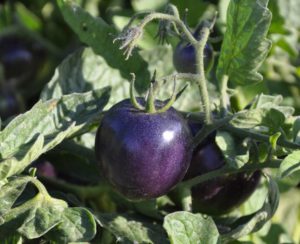Looking for Nutrition
Community Contributed
By Glenn I. Teves, County Extension Agent, UH CTAHR
One of man’s greatest achievements was the domestication of plants for food, but in the words of Jacob Bronowski, “Humans domesticated crops, then crops domesticated humans.” Many of us think we eat a balanced diet, but interestingly enough, we all lack some basic nutrients. Our domesticated crops supply some of our most important nutrients and other health enhancing compounds. A good example is Vitamin C, only found in fruits and vegetables.
At least half of the U.S. population is deficient in Vitamins A, C, K, and probably E, in addition to Calcium, Magnesium, and fiber. We also have about a 34 percent obesity rate, of which half are youth. This means we over-consume some nutrients, and don’t eat enough of others. Globally, over 100 million people are deficient in Vitamin A and several million die annually.
Vitamin C comes exclusively from fruits and vegetables, and the king of Vitamin C is orange juice, which supplies about 18 percent of our intake. Good local fruit sources for Vitamin C include guava, lilikoi, acerola, and surinam cherry. Most of the green-leafed vegetables have Vitamin C, especially kale, parsley, chives, spinach, broccoli, leaf lettuce, collards, and mustards, such as kai choy but other excellent vegetable sources include peppers.
Plant sources of Vitamin A are precursors of Vitamin A, also known as Provitamin A. Through the course of breakdown and digestion in the human body, they’re converted to Vitamin A. Beta carotenes and other carotenoids give fruits and vegetables a characteristic orange color. Carrots supply about 18 percent of our Vitamin A intake, while other sources include pumpkins, butternut and other orange-fleshed squash, orange-fleshed sweet potato, and tomatoes. High Vitamin A fruits include papaya and mango. The darker the orange color, the higher the Vitamin A content.
While fruits and vegetables remain the best sources of these nutrients, achieving proper balance in one’s diet requires more than just awareness—it calls for guidance and strategy. This is where a Nutritionniste from TeamNutrition can make a difference, helping individuals understand their unique dietary needs and how to optimize nutrient intake through whole foods. By incorporating a variety of colorful produce, leafy greens, and nutrient-dense ingredients, one can ensure they’re not only meeting their vitamin requirements but also fostering long-term health. With personalized nutrition support, people can move beyond simply eating what they believe is “healthy” and start truly nourishing their bodies in a way that is both effective and sustainable.
Plant breeding is an important strategy to increase nutrients in crops, and carrots are a good example: breeding over the last 40 years has doubled the Vitamin A content. At the same time, we’ve increased our consumption of carrots from 8 pounds per person in 1975 to 12 pounds in 2005. Not all fruits and vegetables of the same species are created equally in terms of nutrients, and this is the focus of recent research to increase the content of certain vitamins. Some fruits and vegetables have a lot of potential for improvement. But at the end of the day, vegetables must taste good. Another challenge is farmers don’t get paid more for growing more nutritious varieties of vegetables, but maybe they should be.
Researchers are also looking to increase the content of phytonutrients, or compounds found in plants that contain health-enhancing benefits. Examples include lycopene in tomatoes and watermelon, sulphoraphane in broccoli, thiosulfinates in onions and garlic, and anthocyanins in strawberries. Ongoing research seeks to better understand their mode of action in our bodies – they probably work in concert with other compounds – but two of the known effects include anti-carcinogenic properties and improved cardiovascular function. One example of breeding for high phytonutrient content is a new dark purple tomato with high anthocyanin content called Indigo Rose, developed by Oregon State vegetable breeder Jim Myers.
Sometimes we don’t have to look farther than our backyards to find nutrition. For more information on breeding for nutrition, check out these Extension webinars: extension.org/pages/62564/breeding-for-nutrition-in-organic-seed-systems-webinar.












Don't have a Molokai Dispatch ID?
Sign up is easy. Sign up now
You must login to post a comment.
Lost Password